
|
The ZD 50 mm F/2.0 Macro lens User Report and sample images |

|
My other articles related to the |
|
A lens with a triple personality While I'm using a C-5060WZ for most of my close-up and macro shooting, I also wanted to have a real macro lens for my Four Thirds system, to work with the E-300 and E-500 bodies I'm enjoying so much. For the reasons explained below, and because everyone has something good so say about it, I decided to go for the 50 mm F/2 Macro ZD prime. After two weeks with the lens, I'm ready to share my impressions. | |
|
This is a very good lens. More, I would say this may be optically the best lens I worked with so far. Oh, well, I haven't used hundreds of lenses in my photographer's life, but close to a hundred, including some good optics from Zeiss, Schneider, and Nikon (not to mention Olympus, Minolta, Canon, and some others, but not anything from Leica). Now, you do not really have to read the rest of this article.
Picture taken with Olympus C-5060WZ with the zoom at 17.8 mm (85 mm EFL); aperture priority (+0.3 EV): 1/5 s at F/4.5, ISO 80. WB by reference, two flat "daylight" fluorescent panels. Click on the image to see it in a larger size. |
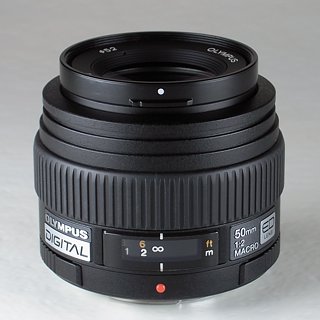
|
|
It is really two, or even three, lenses in one:
From my enthusiastic introduction you may guess that the lens performs well, but it is not easy to excel in three different areas; for more elaboration you will have to wait until the Bottom Line section; now come the details. The specifications These are quoted after the manufacturer, with my comments added.
| |
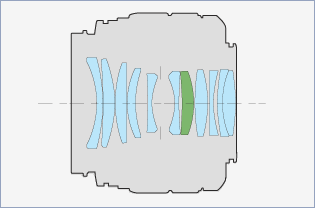
|
Olympus is, however, a company with capable engineering resources, and with a good tradition of coming up with well-performing, innovative designs, so I had high hopes for this lens. They were justified.
The cross-section of the 50 mm Macro ZD; the low-dispersion element is marked dark. Note that (as it sometimes happens in inverted telephoto design) the front element is concave; clearly, not a re-use of a lens designed for film cameras. (Image from promotional materials by Olympus) |
|
Third-party tests, discussed and explained The MTF (Modulation Transfer Function) at full aperture and infinity, as published by Olympus, is not the most meaningful way of showing lens resolution (check my article on that subject). Having neither time or resources to do formal, quantitative lens tests, I can only refer you to some other sources, also quoting their major findings. The German Photozone site (photozone.de) has a test report by Martin Reiner. Read the whole thing at your leisure; here is just a brief summary:
The last item needs some explanation; if you don't feel like reading it, skip the fine print. The Photozone tests were performed, I believe, using the Imatest software to process a series of standard target images (while this is not mentioned explicitly in the article, the Imatest logo appear next to the results). A casual reader may be not aware of the fact that this procedure measures the combined resolution of the whole imaging process: the lens, the antialiasing filter (which blurs the image a bit to reduce Moiré artifacts), demosaicing and interpolating of the photosite response, and then — sharpening of the reconstructed RGB image; possibly also some other factors I'm not aware of. This means that for a lens is good enough the resolution figures will be limited by the camera, and lower when measured on a camera with a smaller pixel count. The Photozone tests were done using the E-300. Details aside, the MTF-50 resolution figures of 1600-1700 suggest that this is a case here; one could say that the lens is too good for the camera! This may explain why the figures do not rise more between F/2 and F/4. I wouldn't be surprised if such a test performed on the E-400 body (ten megapixels, or 12% more pixel resolution in each dimension) gives the MTF-50 resolution values above 1800 for medium apertures, but almost unchanged ones at F/2. Well, I may still have to eat my words of the last paragraph. A similar test performed by a different author for the Canon EF-S 60mm f/2.8 USM Macro on a 350D (Digital Rebel XT) body, also eight megapixels, resulted in a central MTF-50 resolution of 2108 LW/IH at F/4, so it is not the pixel count. Maybe the antialiasing filter, maybe different raw-to-RGB processing? Interestingly the off-center values are lower (1863 LW/IH at F/4), more of what I would expect. Another factoid: Leitz decided not to include an antialiasing filter in their controversial, ten-megapixel Leica M8 ($4800), exactly in order to avoid loss of resolution delivered by their lenses. The antialiasing is done in the software instead. Maybe that's the way to go, if we want to squeeze out all our lenses are capable of? The Popular Photography magazine Web site (popphoto.com) hosts a Lens Test, originally published in the June, 2006 issue. Their standard procedures and test technique differ in two major aspects from those used with the Imatest software:
The first difference is extremely important: the results describe the lens alone and do not depend on the camera (although they assume a frame size specific to the class of cameras for which the lens is intended). The second, though, again needs some fine-print explanation (and, again, feel free to skip it if you feel bored). The SQF is related to, or rather based on, MTF: we can understand the numeric SQF values as MTF averaged in three dimensions: over frequencies impacting the human sharpness perception for a given print size, over orientation (radial versus tangential), and over distance from image center (with the center carrying more weight). Since the magazine introduced the SQF approach in the late Eighties (dumping the MTF or resolution figures) I had to come up with a method of interpreting these results (they may look confusing at the first glance). The method is simple: ignore everything except the 11×14 column: lower print sizes give high numbers for almost any lens anyway, and higher ones are not meaningful, as larger prints usually require proportionally larger viewing distance; if an 11×14 print is sharp enough, so will be all larger ones. Here are the basic findings:
Interestingly, the tester reports maximum magnification of 1:1.6 at the shooting distance of 9.75" (~25 cm), instead of the 1:2 claimed by Olympus. This is strange: my own findings are perfectly in agreement (within 3% or so) with the Olympus' specs. I suspect somebody just goofed here. Coming back to my reference to the Canon 60 mm F/2.8 Macro lens above: yes, Popular Photography tested this one, too (October 2006). Lo and behold, the 11×14" SQF figures for the Canon lens were lower than for the Zuiko Digital: starting from 92.2% at F/2.8, increasing to 93.5% at F/8, through 92.9% at F/16, and down to 91.2% at F/22. While this is still a very good performance, it is consistently lower than that of our lens under review; actually, the highest SQF attained is lower than the value from which the ZD starts at F/2! This supports my explanation from the previous discussion. On the other hand, the performance may vary from one lens specimen to another, although in case of respected manufacturers the variation is rather small. Anyway, both reports give an enthusiastic thumbs up to the 50 mm, F/2 Macro ZD. I am not, however, planning to use the lens to shoot test targets; some differences may be not large enough to be meaningful for practical use; others may not be reflected in test results. For me, nothing beats a series of carefully planned and executed test shots, submitted to a detailed scrutiny. Here they come. | |
|
Samples: Sunny afternoon (E-500) This is my standard subject, a pond in front of my house in Maryland. The series was shot early afternoon (just after 2 PM) in a sunny weather; a high-contrast subject. As always, I'm showing full frames, reduced and re-sharpened, with red rectangles showing the area of the full pixel size (i.e. not reduced) sample, cropped out of the original and not manipulated otherwise. For comparison I am also showing similar samples, shot at the same session with the Olympus 14-54 F/2.8-3.5 ZD zoom lens, set to the focal length of 50 mm. These are shown in the right column. As all images for the same lens were framed identically, the reduced full frame is shown only for the first picture in each series; then follow samples shot at various aperture values. Notes on comparing samples. While some of the differences between the samples being compared may be visible at the first glance, especially in a side-by-side comparison, I found that the "flipping" technique works best. Use some good image-viewing software (certainly not the Microsoft Image and Fax Viewer) to view the images full-screen, in 1:1 pixel scale. Have the zoom and pan locked, and flip back and forth between images using the keyboard or mouse. The exact way how you do the flipping depends on the software you are using. In my case it is ACDSee (as bloated and overloaded with not-so-useful features it may be, it still remains my number one choice). ACDSee allows you to use the Image Basket feature, thus avoiding a need to copy the files being compared to a separate folder; it also loads the next image into memory while the previous one is still being viewed, thus making the transition instantaneous. Unfortunately, the free and otherwise very good IrfanView does not have these features, neither does it allow you to lock the zoom and pan to show the same fragment if the image is larger than the screen. Remember also that the brightness and contrast of an image viewed on an LCD screen varies with the viewing angle. This may distort the comparison if you are viewing two crop samples placed on the same Web page, one underneath another. A medium-weight tripod was used with an infrared remote, and so were lens hoods, to avoid any unnecessary contrast loss. Note that, for a better composition, the frame is centered at the trees behind the house. This is why I switched the camera into the manual focus mode, using AF "on demand" as assigned to the AE/AF Lock button (see here) when pointed at the edge of the roof (within the red rectangle). This was done just once for each lens, after which the frame was recomposed for the actual shots. In some series (but not this one) I also used focus bracketing, which turned out to be too much of a precaution (in every case the nominal-focus frame turned out to be focused most accurately). (If you are using the Opera browser, my favorite, you can view the EXIF data by right-clicking on any image and selecting Image Properties. Unfortunately, neither the Firefox nor MS Internet Explorer support this feature.) |
| 50 mm F/2.0 Macro | 14-54 mm F/2.8-3.5 at 50 mm | |
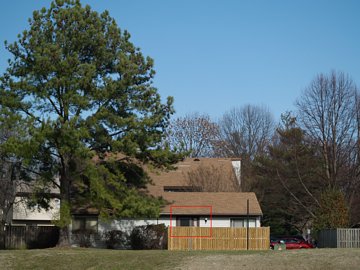
|
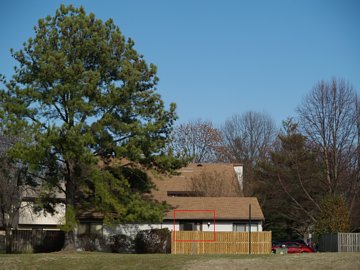
| |
|
All pictures were metered using aperture priority with a compensation of -0.7 EV, at ISO 100. Exposure times ranged from 1/4000 s (F/2.0) to 1/30 s (F/22). Natural color mode with sharpness adjustment | ||

|
Surprisingly, the 50 mm lens is quite sharp even fully open! It is almost as good at F/2.0 as the zoom is at its full aperture of F/3.5. At the corners it even gets a bit better than the other lens (based on reviewing five more such comparative series under various light).
(There is no corresponding sample for the zoom lens, as it does not offer an aperture | |
| F/2.0 | ||
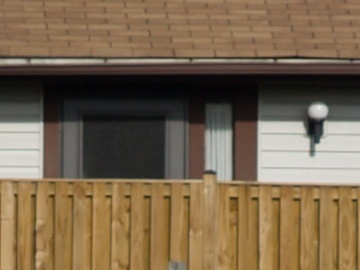
|
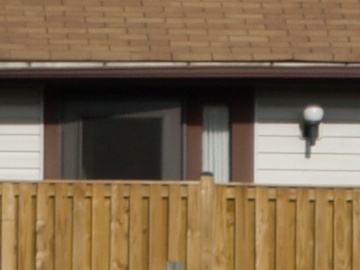
| |
| F/2.8 | F/3.5 | |
| At F/2.8 the 50 mm lens is already sharper than the zoom at F/3.5; it also offers a bit more contrast. The difference is not big, but consistently visible in all sample series I've shot. | ||
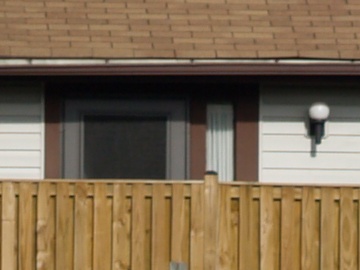
|
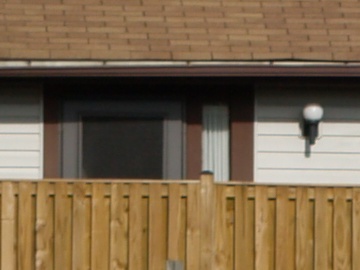
| |
|
F/4.0 — the difference in sharpness and contrast continues, although I doubt you would see it after the images are postprocessed (including sharpening; remember, I keep the in-camera sharpness almost at minimum) and printed to 12×16" (30×40 cm).
The full, unaltered SHQ sample for the 50 mm lens can be found here (5.3 MB!). | ||
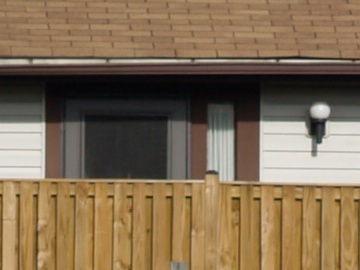
|
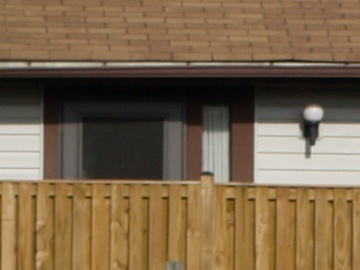
| |
| F/5.6 — both lenses seem to reach the maximum sharpness here, with (again) the 50 mm having a slight edge. | ||
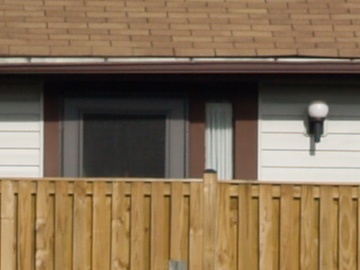
|
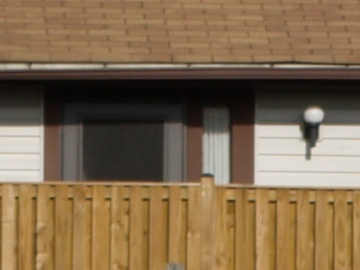
| |
| F/8.0 — am I seeing things? Does the sharpness of the zoom lens drop here? I've checked five more series of images, shot on three different days, and yes, this seems to be the case. The 50 mm Macro keeps rocking. | ||
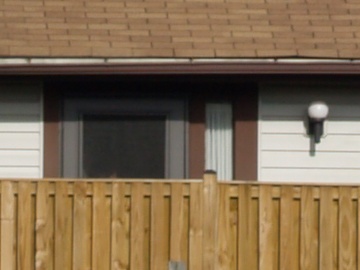
|
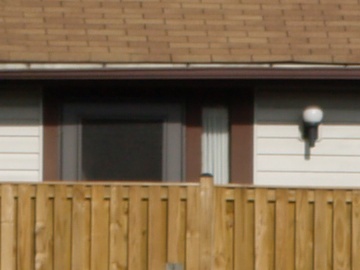
| |
| F/11 — this looks very much like F/8, although the 50 mm lens seems to show a hint (just a hint!) of sharpness loss due to diffraction effects. The difference is, I would say, of no practical value. | ||
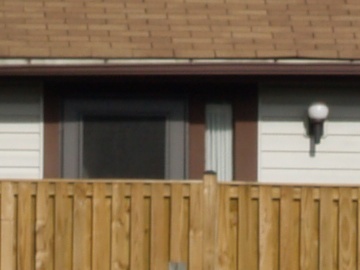
|
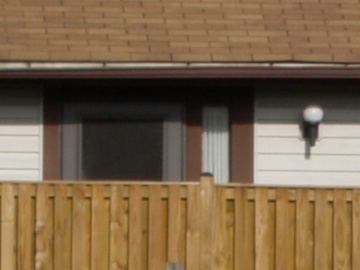
| |
| F/16 — more sharpness loss due to diffraction... | ||
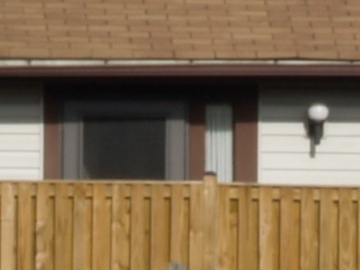
|
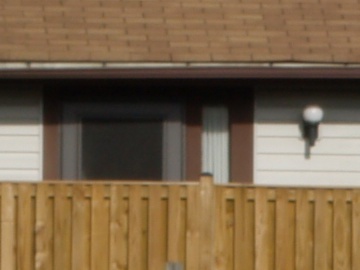
| |
| F/22 — ...and even more here. It is rather impossible to work around this limitation; just a fact of life, regardless of how good the lens may be. | ||
|
For the nitpickers: The qualifier "rather" I've used in the last caption is due to the fact that we might think about a strongly asymmetric lens construction, increasing the absolute aperture size, while keeping the relative one (and the focal length) at the same value. Yes, I know this is contrary to what we've learned at school, but they did not teach us about lens asymmetry then. Still, the increase in lens size, complexity, and cost would not be worth the effort. What can I say? As much as I'm pleased with the performance of the 14-54 mm ZD, the 50 mm lens is consistently sharper, and the difference is visible more in the corners than in the center of the image. I was able to see this clearly in the total of six comparative sets of samples, all shot with both lenses over a two-week period, using a similar technique, under varying light conditions. One of those sets is shown in the next section. This is not surprising: after all, the 50 mm lens is not a zoom; it should be easier to correct a single-focal-length design for all aberrations, so the primes always will have an edge over zoom lenses, both within the same cost range and in the cost-no-object class. Color rendition: I found no differences between these two lenses, which is good. With both, I'm using the same type of protective filter: the B+W 010 MRC (UV-Haze 1×), which I consider to be very neutral. I have heard some people claiming color cast with this or that lens (including the 14-54 mm ZD), but these claims are usually based on images shot with Auto WB, when the actual setting may be affected, sometimes a lot, with just a slight change in the image framing or light conditions. Well, if you use Auto WB, you get what you deserve... Samples: Overcast sky (E-500) To illustrate (if not to prove) the consistency of my observations, here is another set of samples, shot under an overcast sky, a low-contrast case. In this series I was playing it safe: to eliminate any effects of autofocus errors, I was using "AF on demand" in the MF mode with a five-frame, one-step focus bracketing, as described elsewhere. Still, in every case the first frame (as focused by the camera) was the sharpest; that's why in other series I've given up on this technique. To reduce the repetitiveness, let me show only the samples for widest apertures. |
| 50 mm F/2.0 Macro | 14-54 mm F/2.8-3.5 at 50 mm | |
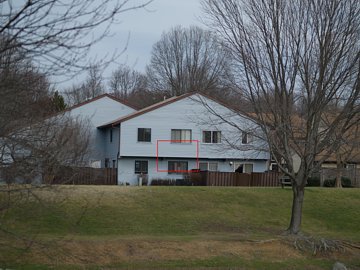
|
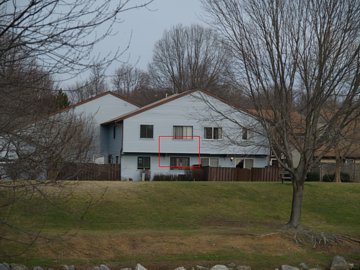
| |
| All pictures were metered using aperture priority with a compensation of -0.3 EV, at ISO 100. Exposure times ranged from 1/2000 s (F/2.0) to 1/15 s (F/22). Natural color mode with sharpness at -1 (minimum) and contrast at -1. WB manually set to "sunny" (5300 K). | ||
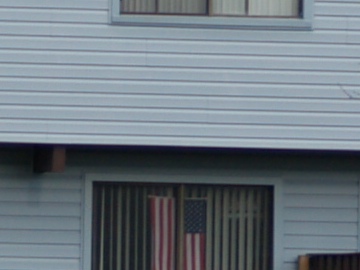
|
Interesting: in a low-contrast scene the difference between F/2.0 and F/2.8 seems to be less pronounced; actually, at F/2.8 the lens seems to be (almost) at its best! Also, the 50 mm lens now seems to have more of an edge over the zoom. Perhaps the loss of sharpness in the previous series is, to some extent, masked by high scene contrast in our subjective evaluation? Sequences for both lenses were shot about 10 minutes apart; this may explain the slightly warmer images for the zoom lens. | |
| F/2.0 | ||
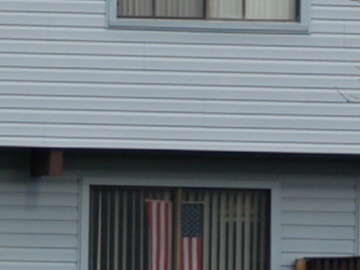
|
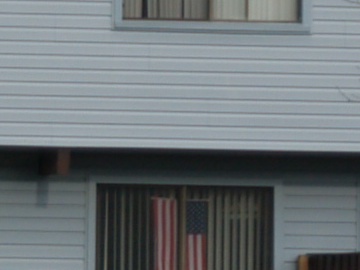
| |
| F/2.8 | F/3.5 | |
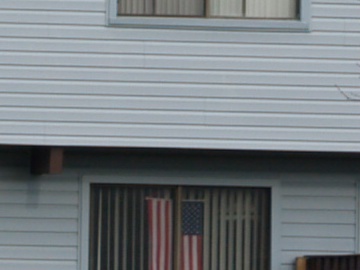
|
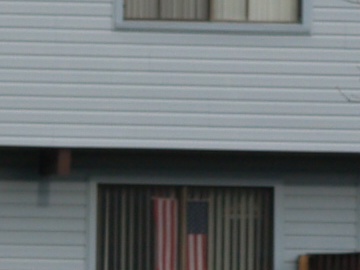
| |
| F/8.0 — one more, to show the dip taken by the zoom lens at F/8. If not for other sequences which show the same effect, and for AF bracketing I've used in this one, I would have considered it a case of misfocusing! | ||
|
Briefly: impressions close to those from the previous section, with the difference between both lenses somewhat better visible. In any case, the 50 mm F/2.0 ZD Macro seems to be a stellar performer at large focusing distances. Portrait, available light (E-500) Here is a casual, available-light head shot of my co-worker. It was taken in the office, close to a window facing an overcast, January day. The focus was set at the right eye of the model, but with a handheld shot it might have moved to the eyebrow. | ||
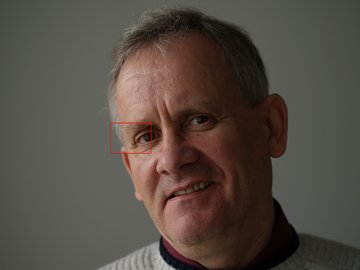
|
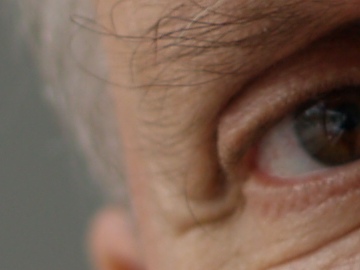
| |
| Olympus E-500, 50 mm F/2 Macro ZD lens. Aperture priority (-0.7 EV): 1/80 s at F/2.0, ISO 100. Natural color mode (with my usual negative sharpness and contrast settings). | ||
|
The limited depth of field, due to the wide-open aperture, is quite pleasing. The right ear is already quite out of focus; this will be better seen in the XGA version (that version has been slightly desaturated, then reduced, and re-sharpened). Note that, at the same (or close) focal length, most suitable for portraits, the 14-54, F/2.8-3.5 lens would require a shutter speed of 1/30 s, nor very handholdable at 50 mm. The "kit" 14-45 F/3.5-5.6 lens would need a 1/10 s exposure, almost certain to result in a shaken picture. (And please, do not write me about image stabilization.) Action and portrait outdoors (E-1) Meet David Irrisari of Spain. David uses the 50 mm ZD Macro a lot on his E-1 and has some most impressive results (although he uses the 14-54 mm ZD most of the time, and also gets great results with the 180 mm OMZ lens). Here are two E-1 samples shot by David. | ||
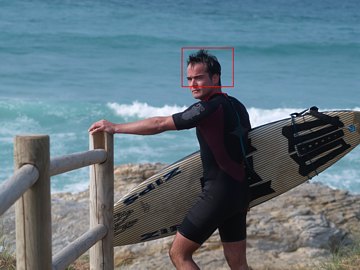
|
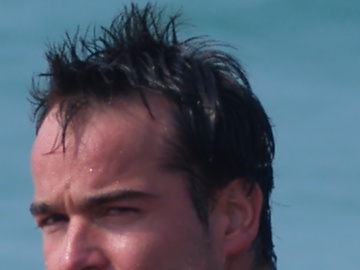
| |
|
E-1, 50 mm F/2 Macro ZD. Aperture priority: 1/2500 s at F/2.8 (0 EV).
Raw image converted with the Olympus plugin (WB at 5300K, sharpness at -1). Image © 2004-2007 by David Irrisari. | ||
|
(When comparing full-scale samples from the E-1 against those from the E-500 one has to remember that because of smaller pixel count, the E-1 images undergo 28% less magnification: compare the red box on this sample with the one above it. In other words, such a visual comparison is slanted against the E-500: the same pixels will require less magnification for the same viewing size of the whole image. A full-scale sample from a 100 MP camera would look really awful here!) | ||
|
Time for some real eye candy: here is another sample by David, a lovely outdoors portrait shot late afternoon, with the lens fully open, to extract the subject from the background. In this image I have chosen two areas for 1:1 samples; one in the model's face (focused), and another to show how the lens renders out-of-focus areas (if you want to sound like a guru, say "bokeh"). And, indeed, now you can see what people mean taking about a creamy bokeh. Both fragments are shown below in their real pixel size.
E-1, 50 mm F/2 Macro ZD. Aperture priority: 1/3200 s at F/2.0 (0 EV).
|
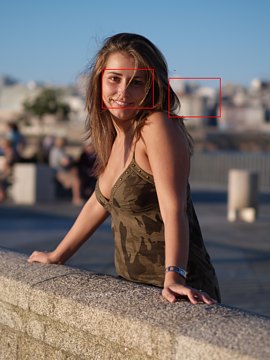
| |
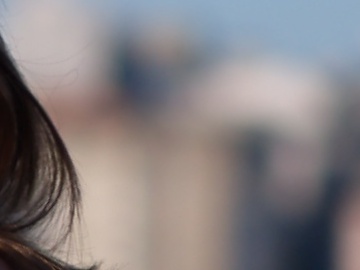
|
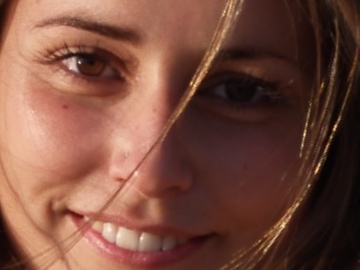
| |
| 1:1 pixel samples from the image above. | ||
|
Note that in the conversion process I have chosen low amount of sharpening, to make these samples comparable with the others, which were saved in-camera as JPEGs and shown here without any further postprocessing. It is only at that stage when I apply the right (whatever that means) amount and kind of sharpening. For comparison, here is the face fragment with a moderate amount of Directional Sharpen applied in the Photo-Paint (note the eyelashes and the diagonal strand of hair). Actually, I wouldn't dare to sharpen this image any more. |
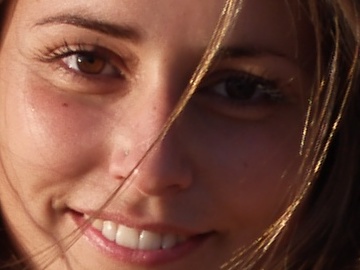
As above, with sharpening (see text). | |
|
To be honest, this picture would look great even if it were taken with a Holga camera. This does not mean that the photographer has to be happy with the out-of-camera results, obtained with default, or almost default, postprocessing parameters I have used. David likes his images converted with Capture One or DC Raw, with the shadows brought up, and quite an amount of sharpening. To give you an idea how he sees this picture, here is the version he postprocessed to his liking, just reduced to the XGA size. | ||
|
Performance: macro (E-500) Before we go into the discussion of the macro capabilities of this lens, we have to clear one ambiguity in terminology: is this really a "macro" lens? Binding this term to the actual image magnification at the image plane makes no sense. This would be meaningful only if we were viewing the image directly on the sensor, which is clearly not the case. This would also mean that various camera/lens combination, providing exactly the same field of view at the closest focusing distance, would be classified as "macro" or not, depending on the sensor size. Therefore I will be using a terminology in which "macro" means "providing the same close-focus field of view as a 35-mm film camera with a 1:1 film-plane magnification, i.e., 36 mm across". Otherwise we would end up with a situation where a tiny-sensor lens/camera combination capable of shooting a mugshot of a butterfly is "not macro", while a full-plate view camera filling the fame with a human head is "macro". Special design considerations come into play if a lens is supposed to perform well at focusing distances below ten or so focal lengths; in this case, below 50 cm or 20". In particular, "normal" (non-macro) lenses usually show less resolution (especially off-axis) and more distortion (usually barrel) under those conditions. This is, I suspect, why macro prime lenses tend to have more elements. But, first of all, here is an illustration showing how close to the subject you can get with this lens. I'm also showing a 1:1 pixel crop of a peripheral area of the image. All pictures shown in this section were, obviously, shot using a tripod and an infrared remote. | ||
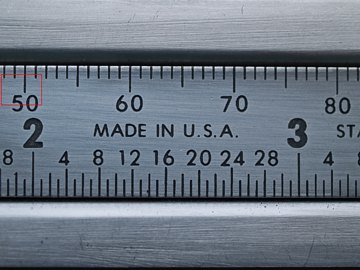
|
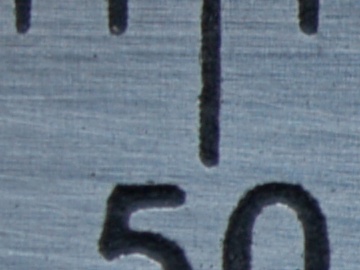
| |
| Olympus E-500 with a 50 mm F/2.0 Macro ZD lens; aperture priority (+0.3 EV): 1/50 s at F/4.0, ISO 100. WB at 5300 K, natural color mode, sharpness at -2, contrast at -1. | ||
|
A tad more than 34 mm across, with full autofocus (although I prefer to set focus roughly by hand and then activate AF by pressing the AE/AF Lock button, configured to do that); this is quite close for a continuous focus from infinity. What is most impressive, though, is that the image stays sharp all the way to the frame edge. (If you enlarge the 1:1 sample, you will notice a hint of chromatic aberration on the borderline between the black etching and the metallic surface — but just a hint; very well controlled.) To put this into an everyday context, here is another sample shot from the same distance, showing a U.S. quarter coin. (Sorry, my European Readers; at the going rate I can no longer afford any euros!) The exposure was much longer, as it was already getting dark outside. | ||
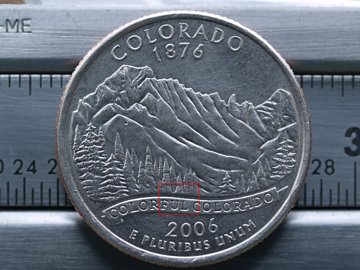
|
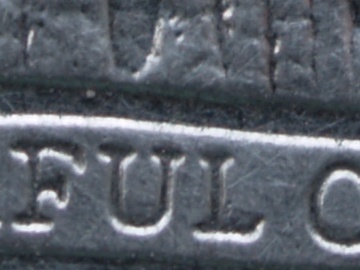
| |
|
Aperture priority (0 EV): 1/8 s at F/5.6, ISO 100; other settings as above.
The full frame, slightly postprocessed, is here. | ||
|
Note that my settings turn the in-camera sharpening all the way down, also lowering the contrast: I prefer to tweak these parameters in postprocessing as needed, even when saving images as JPEGs. You may have a look at the full frame, slightly tonally adjusted, and with moderate sharpening applied (nothing as intrusive as the unsharp mask which can ruin a picture). If anything, this should convince you how good this lens is. You can also see that even at F/5.6, the depth of field does not extend beyond the thickness of the coin. | ||
|
A macro sample set would not be complete without pictures of my old Russian watch (which this way avoided ending up in trash). Here I shot a whole series, at various apertures, under controlled, artificial light: two flat, "daylight", fluorescent panels to provide soft illumination. The full frame is shown only for the first picture; for others — only full-scale fragments.
Olympus E-500 with a 50 mm F/2.0 Macro ZD lens; aperture priority |
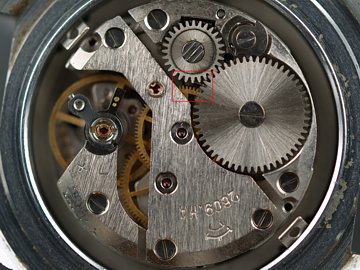
| |
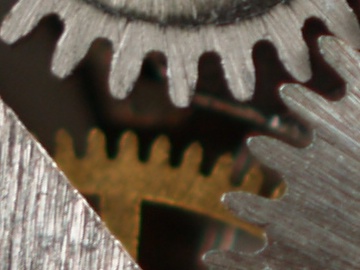
|
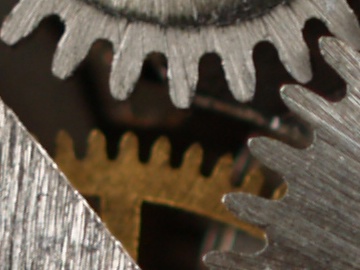
| |
| F/2.0 | F/2.8 | |
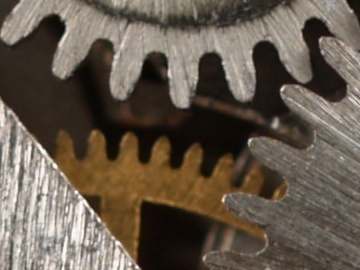
|

| |
| F/4.0 | F/5.6 | |
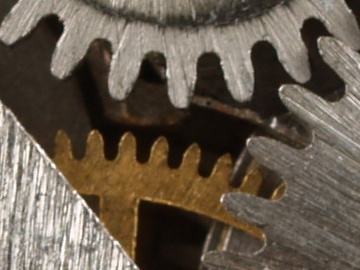
|
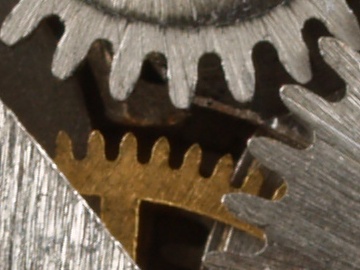
| |
| F/8.0 | F/11 | |
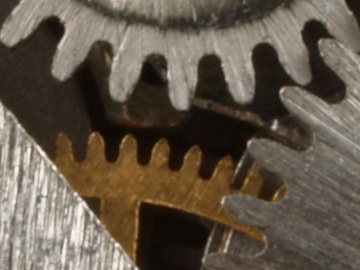
|
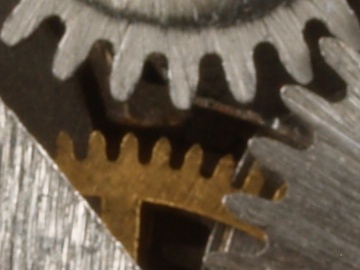
| |
| F/16 | F/22 | |
|
A close and painful scrutiny of these (and many other) samples shows that, first of all, the lens is already mighty sharp fully open, at F/2 — although, obviously, the depth of field is virtually nonexistent at that aperture. (The focus was set at the bright surface at bottom left, the same distance as the right gear shown in the cropped samples. The gear at the top is already recessed by about 0.2 mm — and this already shows in the first sample! The bronze gear less than 1 mm behind those will come into the DoF zone only at about F/8. Second: when the lens is being closed down, sharpness somewhat improves (disregarding the greater DoF). This is normal: most good lenses perform best when closed down by about two F-stops. And, indeed, this seems to be the case here, although I would say (based also on other samples) that at this distance the best performance is reached at F/5.6 and F/8. While F/11 is practically as good, at F/16 light diffraction messes up the resolution to a visible degree — the images are less sharp than at F/2. Then at F/22 the degradation is even more pronounced. As I already mentioned, these shots were taken with in-camera sharpening set to minimum. To show how important this may be for the interpretation of my results, here is a side-by-side comparison of the F/2 samples before and after a moderate amount of directional sharpening in the Photo-Paint. | ||

|
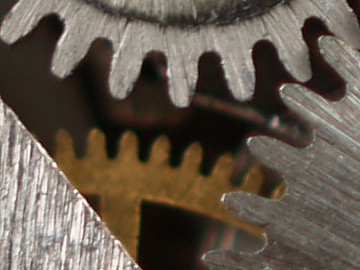
| |
| F/2 original (as above) | F/2 after sharpening | |
|
Now, the show-off time: the full-size, full-frame final version of the image shot at F/8, after some equalization, color adjustment, and sharpening. Don't let your browser fit it to the screen size; show it pixel-to-pixel, scroll around the screen, and enjoy. Yummy. Close-up, compared to the 14-54 mm ZD Another comparison against the 14-54 mm F/2.8-3.5, this time in a close-up application. The subject is a Western belt buckle, 10 cm (4") across. The picture was shot with diffused window light and a white paper reflector from the other side, tripod, IR remote, mirror lock; WB was set by reference. No postprocessing of any kind has been applied to the original HQ (1:4) JPEGs or to the 1:1 crops. This time I used the Vivid image mode, with sharpness at -1, contrast and saturation at 0. I decided not to use focus bracketing; with each lens a series of three frames was shot, and what looked like the sharpest one was selected (although the choice was tough, indeed). | ||
|
50 mm F/2.0 Macro
Aperture priority (-0.7EV), 1/30s, F/5.6, ISO 100 |
14-54 mm F/2.8-3.5 at 50 mm
Aperture priority (-0.7EV), 1/25s, F/5.6, ISO 100 | |

|
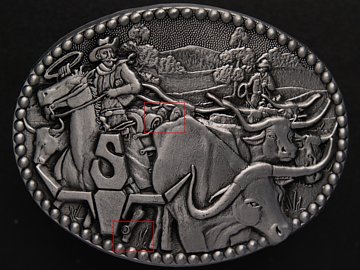
| |
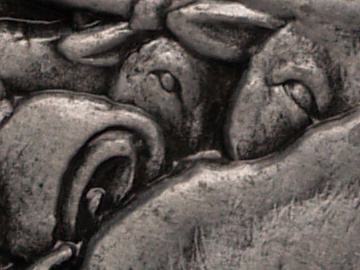
|
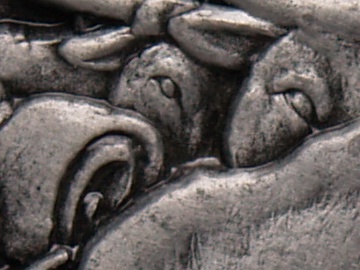
| |
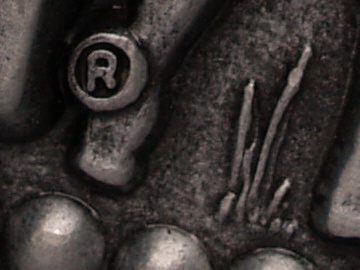
|
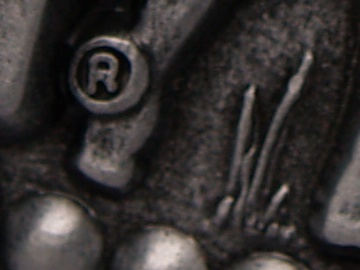
| |
|
Note that this is at F/5.6, where I would expect both lenses to perform best. The differences between images depend on where you look:
While for many applications the off-center resolution may be not of top priority, the effect is, nevertheless, quite noticeable. We have to remember, though, that the 14-54 mm is a zoom, and has been designed as an all-purpose lens, not really optimized for close-ups. Still. To make such conclusions bulletproof, I carefully aligned the lens axis before shooting either sample, with an accuracy estimated as better than one part in fifty, or 1° (which corresponds to about 2/3 mm difference in distance, measured along the axis, between the center and center-bottom of the subject). Also, the buckle is bent horizontally (in a somewhat asymmetric fashion); this is the reason why the off-axis sample was chosen close to the vertical symmetry axis, and not far to the left or right. Last but not least, I carefully inspected the images along a circle around the frame center; any alignment problems would become visible, as such a circle will always have two points at the same (focused) distance as the center. All this is why I stick to what was said above. OK, as a bonus for your patience, here is a full-size, untouched file off the E-500, as shot with the 50 mm ZD Macro lens. Here go another precious 4 MB from my bandwidth allocation... Interestingly, with the 50 mm ZD the camera used a shutter speed of 1/30 s, while with the zoom — 1/25 s. Usually I dismiss such differences as insignificant, but here both frames were shot at identical conditions (within 2 minutes from each other), and the metering circuitry was facing the same subject; the results are also hard to tell apart. One may suspect that the zoom lens, with more elements (15 vs. 11) and glass-to-air surfaces, may suffer 1/3 EV more of light loss due to reflections. Just a thought. Another interesting thing about this experiment is that the camera-to-subject distance for the 50 mm ZD Macro lens was about 10 cm larger than for the other one, zoomed to the same nominal focal length. One of the reasons is that the actual focal lenght of the 14-54 mm ZD decreases when the lens is focused close. Some time ago I discovered, that its angle of view at close distances and at 54 mm is wider than that of the 14-45 mm ZD at 45 mm! Another reason may be that the nodal points of both lenses are located quite differently. Tabletop close-up (E-500) Having looked at the lens performance at both extremes of the focusing range, I wanted to see how it performs at intermediate distances: close-ups, but not quite macro, a distance of about 50 cm (20"). Here is one sample chosen from a series. The focus was set on the letter "M". | ||
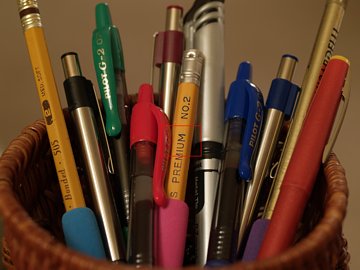
|
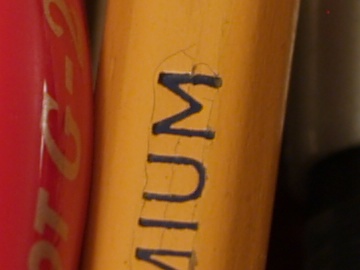
| |
| Aperture priority (-0.3 EV): 0.4 s at F/4, ISO 100. Household warm fluorescent lights in paper shades; WB by reference. Other settings like in the preceding samples. | ||
|
No surprises here. The sharpness reaches the maximum, or close, at F/4, and, as expected, drops down at F/16 and beyond. And yes, at these exposure times and with a lightweight tabletop tripod I've been using the mirror lock (or, as Olympus wants it, "Anti-Shock") function. Geometric distortion check | ||
|
As you remember, the good folks at Pop Photo have found that the geometric distortion of this lens is negligible. Here is my check near the close focus distance, a picture of my laptop's screen: zip, nilch, nada.
Actually, in the full-size image I was able to measure a four-pixel (0.16% of image height) outwards bend of the center of the top horizontal line. Impressive. |
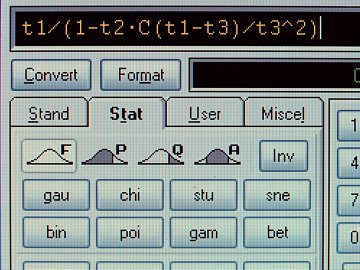
| |
|
The more I use this lens, the more I like it, and I liked it a lot to start with. Great resolution, virtually no chromatic aberration or vignetting, pleasing out-of-focus rendition (that's what people mean when they say "bokeh"), wide aperture, and strong macro performance — what else would I want? Now, the same in more detail. Having identified three areas of applicability for the 50 mm ZD macro, let me offer my twopence (haipenny?) for each of them.
Wearing three hats is never an easy task, and this lens is very good in all three aspects, while excelling most (at least from where I stand) in the last one. As a three-in-one combination it is hard to beat. Considering the optical complexity and quality, and the quality of mechanical construction, I would say the 50 mm ZD is very aggressively priced. I doubt Olympus gets rich selling them. They may reconsider — after all, there is more money in the mass market; why bother with some perfectionist enthusiasts? Therefore, if you feel tempted, do not think much longer; get one now. | ||

|
My other articles related to the |
|
Evolt® and Olympus® are registered trademarks of Olympus Corporation.
This page is not sponsored or endorsed by Olympus (or anyone else) and presents solely the views of the author. |
| Home: wrotniak.net | Search this site | Change font size |
| Posted 2007/01/28; last updated 2007/04/01 | Copyright © 2007 by J. Andrzej Wrotniak |